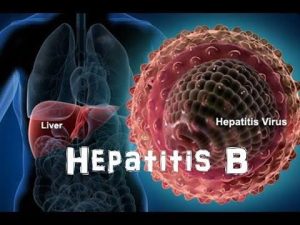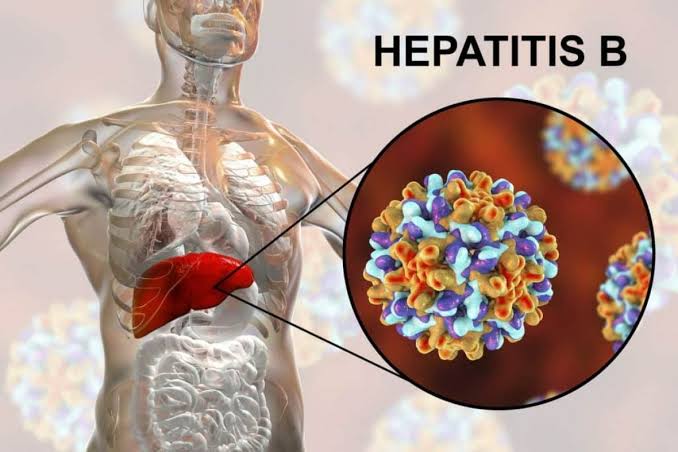In the dark alleys of a bustling city, a silent predator lurked, waiting to strike. Its name was Hepatitis B, but its victims knew it as the “Liver Lion” – a formidable foe that could ravage the liver and leave its prey helpless. Yet, amidst the fear and uncertainty, a glimmer of hope emerged. A young warrior, fueled by determination and armed with knowledge, dared to confront the Liver Lion head-on.
As the battle raged on, the warrior discovered the Lion’s weaknesses: vaccination, awareness, and early detection. With each victory, the warrior’s strength grew, and the Liver Lion’s roar began to fade. The city’s residents, once paralyzed by fear, now found the courage to face their enemy. Together, they formed an army of hope, marching towards a future where the Liver Lion’s reign would end. And the warrior, now a legend, stood tall, a symbol of the power within us all to conquer even the most formidable foes.
But the story doesn’t end there. The Liver Lion still prowls, seeking its next victim. The warrior’s legacy lives on, inspiring others to join the fight. Will you be the next to take up the mantle? The battle cry echoes through the streets: “Face your fear, fight back, and never give up!” The taste of victory is sweet, but the journey is far from over. The Liver Lion awaits, and only together can we emerge victorious. The suspense is palpable, the hope is real, and the inspiration is contagious. Join the battle, and let the roar of the Liver Lion be silenced forever!
What is Hepatitis B?

Hepatitis B is a serious liver infection caused by the hepatitis B virus (HBV). It can lead to liver damage, liver cancer, and even death. HBV is transmitted through:
1. Contact with infected blood or bodily fluids
2. Sexual contact with an infected person
3. Mother-to-child transmission during childbirth
4. Contaminated needles or syringes
5. Accidental needlesticks
6. Sharing personal care items like razors or toothbrushes
7. Tattooing or piercing with unsterilized equipment
Pathophysiology
1. HBV enters the body through a wound, mucous membrane, or bodily fluid exchange.
2. The virus targets the liver, binding to hepatocytes (liver cells).
3. HBV penetrates the hepatocyte, releasing its genetic material (DNA).
4. The viral DNA is replicated, producing new viruses.
5. The immune system responds, triggering inflammation and liver cell damage.
6. In severe cases, the immune response can lead to liver failure, cirrhosis, or liver cancer.
7. Chronic infection can result in the integration of HBV DNA into the host genome, perpetuating the infection.
The liver’s attempt to fight the infection causes damage, leading to:
– Hepatitis (inflammation)
– Fibrosis (scarring)
– Cirrhosis (advanced scarring)
– Liver cancer (hepatocellular carcinoma)
Early detection and antiviral treatment can help prevent or slow disease progression.
Causes
1. Sexual contact with an infected person
2. Sharing needles or syringes
3. Accidental needlestick
4. Mother-to-child transmission during childbirth
5. Contact with infected blood
6. Contact with infected bodily fluids (semen, vaginal fluids, saliva)
7. Exposure to sharp objects
8. Reuse of contaminated needles and syringes
9. Sharing personal care items (razors, toothbrushes)
10. Tattooing or piercing with unsterilized equipment
11. Blood transfusion (rare in developed countries)
12. Organ transplant (rare)
13. Dialysis
14. Sharing of contaminated drug equipment
15. Inadequate sterilization of medical equipment
16. Inadequate vaccination
17. Mother’s infection during pregnancy
18. Infection during childhood
19. Inadequate testing and screening
20. Unprotected sex with multiple partners
Signs and Symptoms
1. Abdominal pain
2. Dark urine
3. Fever
4. Joint pain
5. Loss of appetite
6. Nausea and vomiting
7. Weakness and fatigue
8. Yellowing of the skin and the whites of the eyes (jaundice)
9. Liver disease
10. Liver failure
11. Scarring of the liver (cirrhosis)
12. Liver cancer
13. Kidney disease
14. Inflammation of blood vessels
15. Pale stools
16. Diarrhea
17. Constipation
18. Abdominal swelling
19. Skin itching
20. Mental confusion (in severe cases)
Note that some people may not exhibit any symptoms at all, or the symptoms may be mild. In severe cases, Hepatitis B can lead to liver failure, liver cancer, or even death. If you suspect you have been exposed to HBV or are experiencing symptoms, seek medical attention immediately.
Prevention
1. Get vaccinated: The HBV vaccine is the most effective way to prevent Hepatitis B.
2. Practice safe sex: Use condoms and dental dams to prevent the transmission of HBV through sexual contact.
3. Avoid sharing personal items: Don’t share razors, toothbrushes, or needles.
4. Use sterile needles: If you inject drugs, use sterile needles and syringes.
5. Avoid accidental needlesticks: Handle sharp objects carefully.
6. Cover open wounds: Cover open wounds and cuts to prevent exposure to HBV.
7. Avoid sharing food and drinks: Don’t share food and drinks with someone who has HBV.
8. Use safe blood transfusion practices: Make sure blood transfusions are done with screened blood.
9. Use proper hygiene: Wash hands regularly.
10. Avoid sharing cosmetics: Don’t share cosmetics or personal care items.
11. Use a condom during tattooing and piercing: Make sure the equipment is sterile.
12. Get tested: Get tested for HBV if you’re at risk.
13. Avoid alcohol and drugs: Avoid excessive alcohol and drug use.
14. Practice good hygiene: Wash hands regularly.
15. Avoid close contact with someone who has HBV: Avoid close contact with someone who has HBV until they are fully vaccinated.
Treatment and Management of Hepatitis B
– Pegylated interferon (PEG-IFN) or nucleos(t)ide analogues
– Nucleos(t)ide therapy for patients with acute liver failure
– Immunoglobulin and vaccination for newborns born to women positive for hepatitis B surface antigen (HBsAg)
– Antiviral therapy (in some cases)
– Monitoring of ALT levels every 6 months
– Liver transplantation in severe cases where the liver is damaged beyond repair
– Avoiding alcohol and drugs
– Practicing safe sex
– Avoiding sharing personal items
– Getting tested for HBV if you’re at risk
– Getting vaccinated against HBV
– Avoiding close contact with someone who has HBV
– Using a condom during tattooing and piercing
– Avoiding sharing food and drinks with someone who has HBV
– Covering open wounds and cuts to prevent exposure to HBV
– Using sterile needles and syringes if you inject drugs
– Getting a fixed-dose combination of tenofovir/lamivudine (or emtricitabine)/efavirenz if you have HBV and HIV

